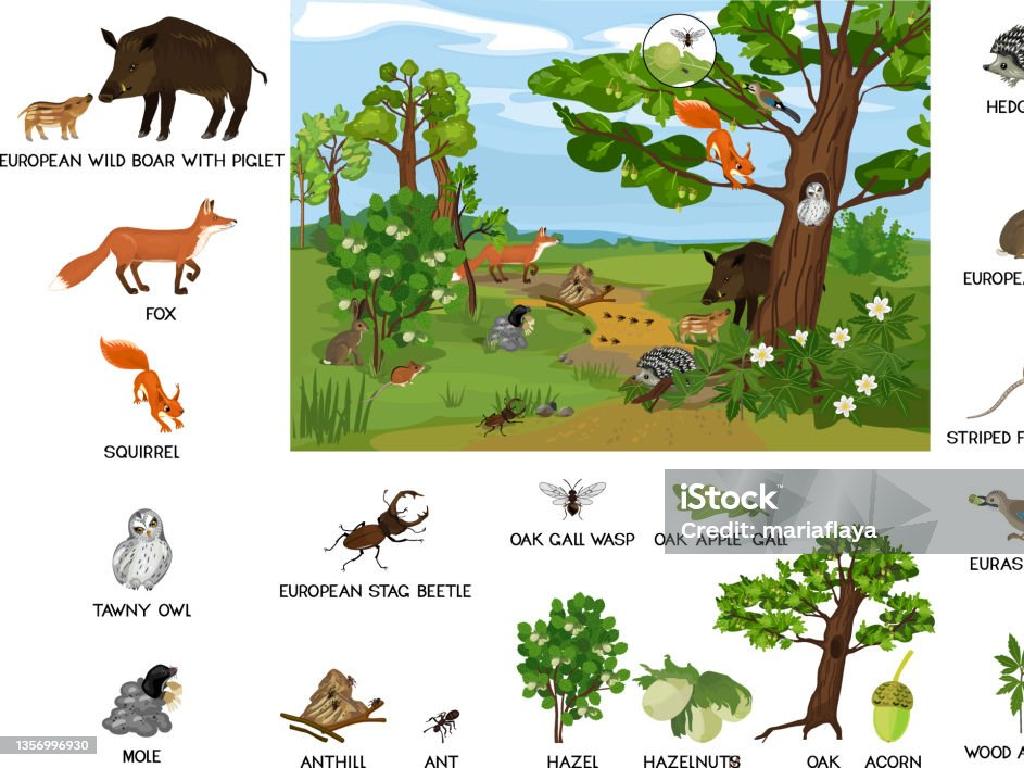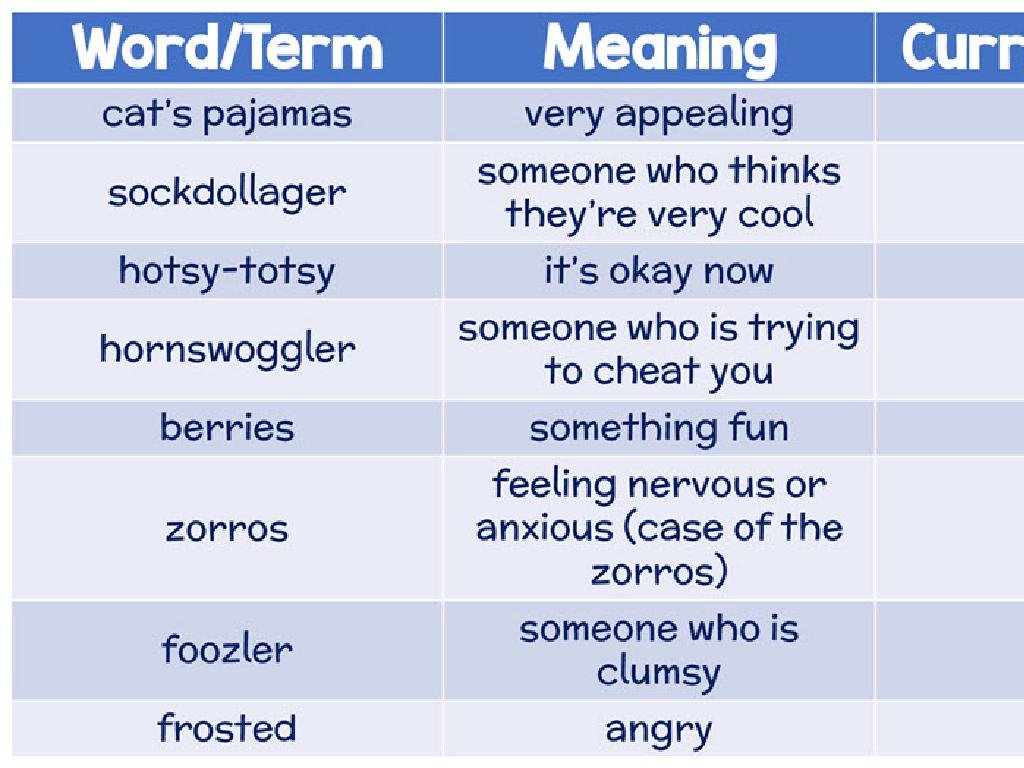Volume Of Cubes And Rectangular Prisms
Subject: Math
Grade: Sixth grade
Topic: Surface Area And Volume
Please LOG IN to download the presentation. Access is available to registered users only.
View More Content
Introduction to Volume: Exploring 3D Shapes
– Understanding 3D shapes
– Objects with length, width, and height
– Defining volume
– Volume measures space inside a 3D shape
– Volume’s role in daily life
– Used in cooking, packing, building
– Why knowing volume matters
– Helps in planning and resource management
|
This slide introduces the concept of volume as it applies to three-dimensional shapes, which are objects with length, width, and height. Volume is the measure of the amount of space inside a 3D shape. It’s a crucial concept in many aspects of daily life, such as cooking (measuring ingredients), packing (determining the size of a box needed), and building (calculating the amount of material required). Understanding volume is also important for effective planning and resource management. Encourage students to think of examples where they have encountered volume in their own lives. This will help them grasp why it’s important to learn how to calculate volume and understand its practical applications.
Volume of a Cube
– What is a cube?
– A cube is a 3D shape with 6 equal square faces
– Volume formula: V = side^3
– Example: Cube with side 4 cm
– If each side is 4 cm, volume is 4^3 = 64 cm^3
– Calculate volume for practice
– Find the volume of a cube with side lengths of 2 cm, 5 cm, and 10 cm
|
This slide introduces the concept of a cube and how to calculate its volume. Start by defining a cube as a three-dimensional shape with six equal square faces. Emphasize that all sides are of equal length. Introduce the formula for the volume of a cube (V = side^3) and explain that ‘side’ refers to the length of one edge of the cube. Provide an example by calculating the volume of a cube with a given side length, such as 4 cm, to demonstrate how to apply the formula. Finally, encourage students to practice calculating the volume of cubes with different side lengths to reinforce their understanding. This will prepare them for more complex volume calculations and help solidify their grasp of three-dimensional geometry.
Calculating Volume: Cube Example
– Understanding volume of a cube
– Cube with side length 4 inches
– Formula: Volume = side^3
– Volume is measured in cubic units
– Calculate: 4 inches x 4 inches x 4 inches
– 4^3 = 64 cubic inches
|
This slide presents a practice problem to help students understand how to calculate the volume of a cube. Start by explaining that volume measures the amount of space inside a 3D object and is expressed in cubic units. Use the example of a cube with a side length of 4 inches to demonstrate the application of the volume formula for cubes, which is side cubed (side^3). Walk through the calculation step by step, multiplying the side length by itself three times: 4 inches x 4 inches x 4 inches, which equals 64 cubic inches. Encourage students to visualize the cube and understand that each side is of equal length. This concrete example will help solidify their understanding of volume calculation for cubes.
Volume of Rectangular Prisms
– What is a Rectangular Prism?
– A 3D object with 6 faces, all rectangles
– Volume Formula: V = l x w x h
– Multiply the length (l), width (w), and height (h) to find volume
– Example: Find Volume with Dimensions
– Given l=5cm, w=3cm, h=2cm, Volume = 5 x 3 x 2 = 30cm³
– Practice: Calculate Volume
|
Introduce the concept of a rectangular prism by describing its properties, such as having six faces that are all rectangles. Explain that the volume of a 3D object is the amount of space it occupies, which can be calculated using the formula V = length x width x height. Provide a clear example with given dimensions to illustrate how to apply the formula. Finally, encourage students to practice calculating volume with different sets of dimensions to reinforce their understanding. Make sure to provide guidance on unit conversion and emphasize the importance of writing the final answer with the correct unit of measurement, such as cubic centimeters (cm³).
Calculating Volume: Rectangular Prism
– Understanding volume measurement
– Volume formula for a prism
Volume = length x width x height
– Example: 5 in x 3 in x 2 in prism
Use dimensions 5 in (length), 3 in (width), 2 in (height)
– Step-by-step calculation
5 in x 3 in x 2 in = 30 cubic inches
|
This slide is a practice problem designed to help students apply the formula for finding the volume of a rectangular prism. Start by explaining that volume measures how much space an object occupies. The formula for the volume of a rectangular prism is the product of its length, width, and height. Walk through the example by multiplying the given dimensions: 5 inches (length) by 3 inches (width) by 2 inches (height) to find the volume. The result is 30 cubic inches, which represents the space inside the prism. Encourage students to visualize filling the prism with 1-inch cubes to understand the concept of volume better. After explaining, give students similar problems to solve, ensuring they practice and grasp the concept.
Real-World Application of Volume
– Volume in everyday life
– Used in cooking, building, packing
– Comprehending internal space
– Volume determines how much space an object occupies
– Classroom measurement activity
– Measure and calculate volume of personal items
|
This slide aims to connect the concept of volume with its practical applications in students’ daily lives. Discuss how volume is essential in various fields such as cooking (measuring ingredients), construction (space for materials), and packing (how many items can fit in a box). Highlight that understanding volume helps us know the capacity of any 3D object. For the activity, students will select personal items in the classroom, measure their dimensions, and calculate their volume. Provide guidelines for the teacher to facilitate the activity, suggesting items like pencil boxes, books, and water bottles for measurement. Encourage students to think critically about how objects of the same outer size can have different internal volumes.
Class Activity: Measuring Volume
– Find an object to measure
– Use length x width x height
– For a rectangular prism, multiply the dimensions
– Record your measurements
– Use a ruler or measuring tape for accuracy
– Calculate the object’s volume
– Apply the formula V = l x w x h for calculation
|
This activity is designed to provide hands-on experience with volume calculation. Students should select an object in the classroom, such as a book or a box, and use a ruler or measuring tape to measure its dimensions. They will then apply the formula for the volume of a rectangular prism (V = length x width x height) to calculate the object’s volume. Encourage students to double-check their measurements and calculations. Possible variations for different students could include measuring objects of various shapes, comparing volumes of multiple objects, or even estimating volume before measuring. This activity will reinforce their understanding of the concept of volume and how to calculate it for cubes and rectangular prisms.
Volume Review & Q&A Session
– Recap volume calculation
Volume is space inside 3D shape, for cubes V=s^3, for prisms V=lwh
– Ask your questions now
– Let’s clear up confusion
Any tricky parts? We’ll solve them together!
– Review with examples
We’ll go through examples together for better understanding
|
This slide is meant to consolidate the students’ understanding of calculating the volume of cubes and rectangular prisms. Begin by reviewing the formulas: for cubes, volume equals the side length cubed (V = s^3), and for rectangular prisms, volume equals the length times width times height (V = lwh). Open the floor for students to ask any questions they have about the topic, encouraging them to think about areas they found challenging during the lesson. Address any misconceptions or confusions that arise. Use this opportunity to work through additional examples as a class, ensuring that students can apply the formulas correctly and understand the concept of volume in a practical context. Prepare to offer different strategies for finding volume and to show how these calculations can be applied in real-world scenarios.
Homework Assignment: Mastering Volume
– Complete the Volume Worksheet
– Practice calculating volume
– Use the worksheet to practice finding the volume of cubes and prisms
– Review volume formulas
– Remember, volume of a cube is a^3 and of a prism is l*w*h
– Get ready for a quiz next class
– Study the worksheet examples to prepare for the quiz
|
This homework assignment is designed to reinforce the concepts taught in class about the volume of cubes and rectangular prisms. The worksheet provides a variety of problems for students to solve, ensuring they practice calculating volume using the formulas. Encourage students to memorize the formulas: volume of a cube (V = a^3) and volume of a rectangular prism (V = l*w*h), where ‘a’ is the edge of the cube, and ‘l’, ‘w’, ‘h’ are the length, width, and height of the prism, respectively. Remind them that understanding these concepts is crucial for their upcoming quiz. Provide tips on how to approach different problems and suggest that they review their class notes and textbook examples to solidify their understanding.






